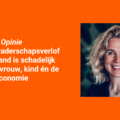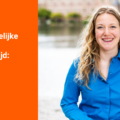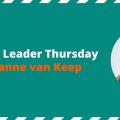
Politicians look at themes such as housing shortage, asylum seekers, energy and farmers through economic or cultural glasses. While it is often a battle for scarce space. Talk about that, write Daan Bos and Wouter Ubbink.
This opinion piece by Daan Bos was originally published in Fidelity on January 3, 2025.
Anyone who has followed the social debate in recent years can see a trend. Major social problems are increasingly dominated by the battle for scarce space, with the central question: how do we distribute it? Whether it concerns housing construction, new wind turbines, nitrogen, distribution and data centres or reception locations for asylum seekers. There are plenty of maps and plans from think tanks and planning agencies, but politics lags behind.
Despite the central role of space in all kinds of issues, political parties seek political conflict along other lines. For example, during nitrogen debates, there is no talk about redistribution of agricultural land, but about buying out farmers and their role in our culture and economy. In housing debates, the question is not which land we want to sacrifice for housing, but about priority for asylum seekers and about the landlord levy. The cultural and economic glasses are often put on. But not the spatial one.
Some well-meaning administrators in the previous cabinet did try to tackle the major social problems in the spatial core. Minister for Nature and Nitrogen Van der Wal came up with the nitrogen map, with which she tried to create clarity about which land use was possible in which location. State Secretary for Asylum and Migration Van der Burg came up with the distribution law. With this he wanted to solve the shortage of asylum reception locations by 'spreading out' the problem over municipalities in the country. The plans were killed by the whims of The Hague politics and the new cabinet also did not like the two spatial solutions. The current politicians seem to systematically avoid the issue of spatial distribution.
Political aversion
The reluctance to discuss space in politics has a political reason itself. There are few parties that benefit from making space explicit as a conflict line. Parties with a focus on the economy, such as the PvdA, the SP and the VVD, prefer to see public debate along economic lines. They prefer to talk about buying out farmers or the price of a house: as long as it is about the wallet.
Parties with a focus on culture and identity, such as the PVV, CDA and D66, prefer to debate along cultural lines. The same themes emerge in a different way: are we proud of the farmers? Which population groups have the greatest housing shortage? Parties benefit from placing problems in an economic or cultural frame, because voters associate them with those themes. In doing so, they avoid the spatial distribution issue that underlies social problems.
The consequence of this opportunistic focus on the economic and cultural narrative is that spatial issues are not addressed from the core. By making clear choices about the distribution of space, real solutions come into view. How many square kilometers of intensive livestock farming have to disappear to solve the nitrogen problem? Where do we want to live and work? Where do we reserve space for nature, industry, infrastructure and energy?
Spatial distribution issues require a spatial solution. If choices are not made from that perspective, but are always about how much money is earned or which population groups are affected, then solutions remain out of reach. Political parties must therefore dare to enter into the debate along the lines of the battle for space. Only then can they contribute to real solutions for the future of our beautiful – but small – country.





